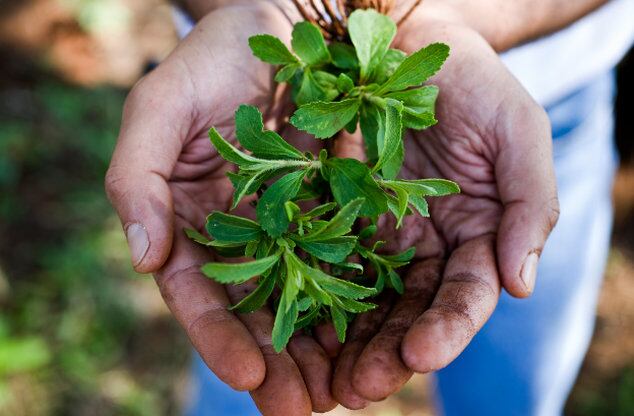The 10,000 sq ft $50m plant, located next to Cargill’s corn refining operation in Blair, Nebraska, uses dextrose, a simple sugar from corn, as the feedstock for yeast strains that have been genetically engineered to produce Reb D and Reb M (the most sought-after steviol glycosides/sweeteners) far more efficiently – and, the partners claim, more sustainably - than firms extracting them from the stevia leaf.
The sweeteners are being marketed under the Eversweet brand, and have the same specifications as the Eversweet Reb D+M Cargill has been supplying over the last couple of years via a contract manufacturer (the new plant builds in IP from DSM and Cargill that makes the production process more efficient).
Efficiency and sustainability
While Reb-A, the best-known steviol glycoside, can be extracted from the stevia leaf in commercial quantities, it has a bitter aftertaste that formulators have struggled to overcome in certain applications.
However, better-tasting steviol glycosides such as Reb M and Reb D are present in the stevia leaf in such tiny quantities that the business case for extracting them from stevia plants is challenging (although some companies are breeding varieties with higher levels of these glycosides - notably PureCircle), said Andy Ohmes, Cargill global high intensity sweetener product line lead/Avansya VP sales & marketing.
“If you’re making Reb D+M from the leaf, it’s very costly, even if you are starting with the leaf and then using a bio-conversation process [using enzymes to convert components from the stevia leaf to Reb D + M in a fermentation process]; whereas our approach is infinitely scalable – you just add more fermenters. This initial volume is certainly enough to service the largest food and beverage manufacturers in the world.
“The other factor is sustainability,” he told FoodNavigator-USA. “This is just a back of an envelope calculation, but it might take 177 acres to grow enough stevia to produce 1MT of Reb M, whereas it takes around 7.4 acres of corn to produce the same amount of Reb M in a fermentation process.”

Labeling: Stevia sweetener
The market for high-intensity sweeteners produced by fermentation is expected to exceed $3bn by 2025, added Avansya CEO Oscar Goddijn, who said that while there were other players in this space such as Amyris, Avansya had a clear advantage because it could also provide applications support based on Cargill’s years of experience and broad portfolio of sweetening solutions.
“Anyone that’s worked with stevia knows it’s not something you just drop in like sugar, you have to know what you’re doing,” said Ohmes.
While fermentation-based Reb D and M cannot be labeled as ‘stevia leaf extract’ because it’s not from the leaf, it can be labeled ‘stevia sweetener,’ claimed Ohmes.
“Ultimately it’s up to the consumer packaged food companies to decide what to put on the label, but we feel like this is the best way to communicate what it is to consumers [other labeling options include ‘Rebaudioside M,’ ‘Rebaudioside D,’ or ‘steviol glycosides’]. The molecule from the fermentation is identical to what’s in the leaf.”
Beverages, bakery, dairy
Cargill and DSM – who had both independently developed IP around producing steviol glycosides via microbial fermentation – decided to pool resources late last year in a bid to accelerate their commercialization, given that DSM had a more productive yeast strain, while Cargill had already started building the manufacturing facility at Blair, and had significant applications expertise in sweeteners.
To date, more than 300 customer trials and product development projects are currently in progress with Eversweet, said Ohmes, who sees potential in bakery and dairy as well as the core market of beverages.
Cargill has also identified a botanical extract it is marketing as ClearFlo, which "exponentially increases the solubility of Reb M and other glycosides" and will enable it to produce concentrated syrups and powders for soda fountains and other applications using stevia, said Ohmes.
Read more about ClearFlo HERE.
DSM received a ‘no questions’ letter from the FDA in May 2018 regarding its GRAS (generally recognized as safe) determination for its Reb M steviol glycoside sweetener, which is produced via a strain of the yeast Y. lipolytica obtained after the mating of two parent Y. lipolytica strains engineered to produce steviol glycosides.
Cargill received a no questions letter from the FDA in spring 2016 regarding its GRAS determination for its Reb D and Reb M sweetener produced via a strain of the yeast Saccharomyces cerevisiae.




